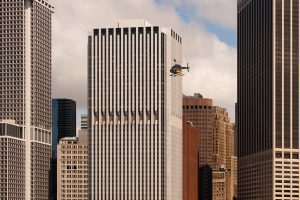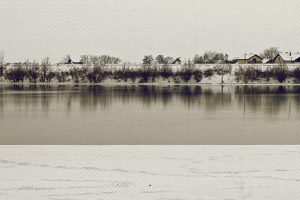Line and Direction
Line and its direction have strong impact in composition of an image.
There are at least two reasons for that fact. First, they represent a path which allows the eye to move around the image. Practically, they lead the eye of the viewer through the format and keep his attention to the image. On the other hand, they influence the mood and emotional perception. They can divide, unify, or accent certain parts of a composition. There are several types of lines and each one has a different impact upon a photograph and creates a certain mood.
Leading lines
or guidelines are to point towards an interesting subject. They lead the eye from one part of the picture to another: from the foreground to the background, the secondary subject to the main subject. They do not lead to places without a subject or out of the image but must, instead, lead the eye towards the main subject. Leading lines are most effective when there is some relation between line and subject, like these railways on the right represent the direct bond between the viewer and the model.

Diagonal Lines
are often considered the most powerful leading lines, as they add depth to the image. They give the sense of action and force especially when leading in different directions and intersecting with one another. When there are vertical and horizontal lines in an image, the diagonal line takes the lead, even if not placed in foreground. Their power resides in their ability to grab the viewer’s eyes and to stroll the gaze back and forth along diagonals.

Vertical Lines
can be successfully used when shooting architecture and urban settings, trees, fences, people standing up and mountains. Thus they may convey power, grandeur and height and evoke the mood of stability or peace and then they have similar effect to horizontal lines. In a way, they are perceived as rigid as they set limits and contribute to two-dimensional sensation of the picture- which is exactly opposite to the effect of diagonal lines.

Curved Lines or S Curves
carry the eye through a scene just as effectively as arrow-straight lines. They have perfect grace and perfect balance, they are elastic and charming and they denote quiet, calm and sensual feelings.
It is simply surprising how this type of line wins over all other lines in an image. Its dominance is not intrusive (perhaps like diagonal line) but effective and pleasant and also conveys the depth.

Horizontal Lines
imply stability and tranquility. Landscapes, horizons, oceans, deserts, sleeping people are good subjects for photos with horizontal lines. They are used when photographer wants to transfer the sentiment of timelessness, frozen moment in time – which photography essentially is.
They provide contrast to foreground, as they convey static atmosphere.

Converging lines
convey depth, scale and distance. Photography is all about capturing a three-dimensional world in two dimensions. Converging lines suggest distance. Our mind assumes that these buildings on the left have the same dimensions on the bottom and on the top, so if they appear to grow closer we know that’s because they’re growing more distant. When they converge into an interesting subject, they serve to point directly towards it, they are our direct connection to the essence of the image, they become leading lines.

*All photos in this page are mine and I own the copyright. These texts were originally created for my work in photography course in French school in Belgrade. I wrote this text probably under the influence of other websites or books about photography and references can be found in the footer of each post.
References:
http://www.shotaddict.com/wordpress/2006/11/16/1773.html
http://photoinf.com/General/Robert_Berdan/Composition_and_the_Elements_of_Visual_Design.htm
http://fr.wikipedia.org/wiki/Composition_picturale




